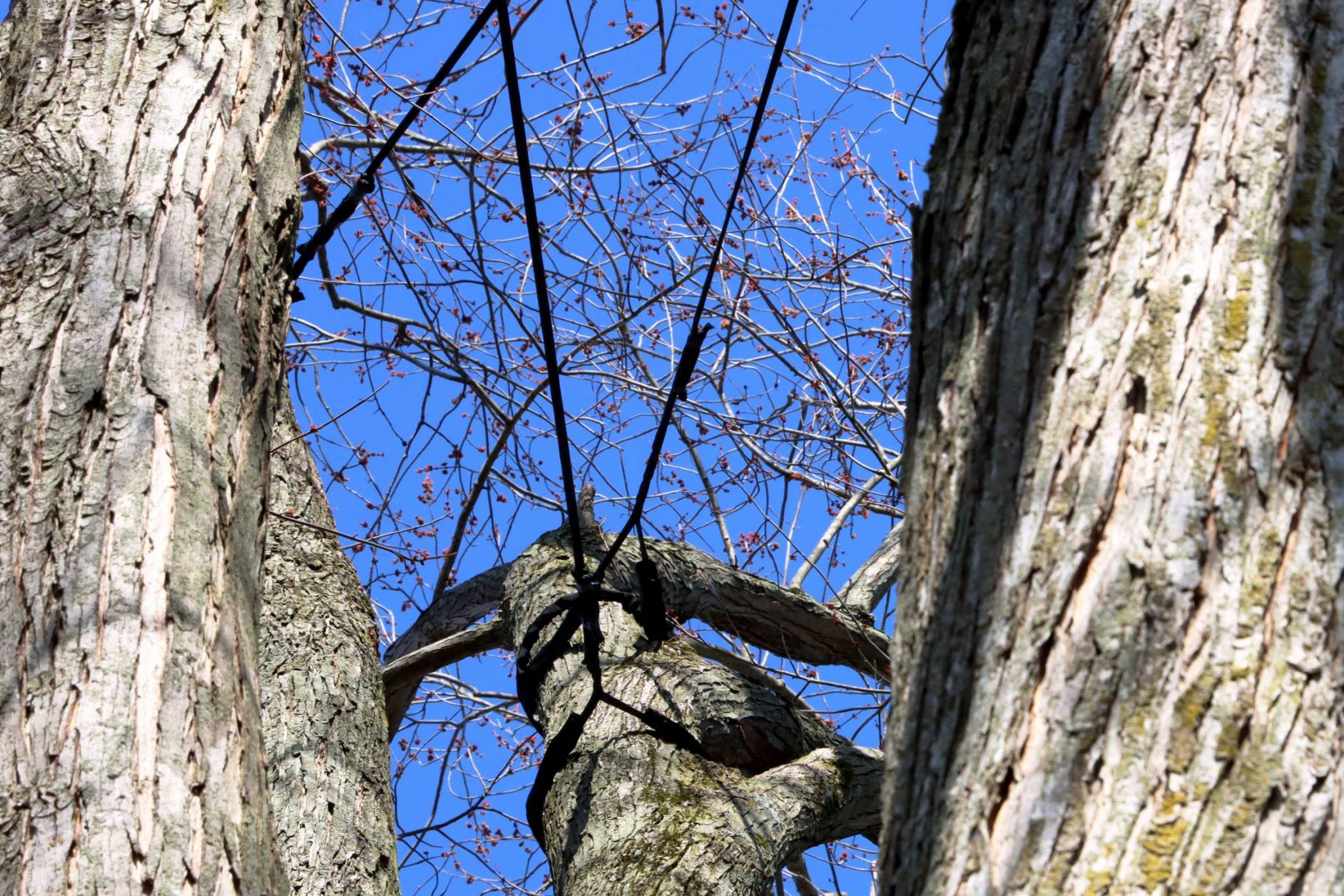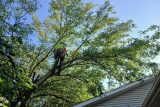Understanding The Need For Tree Cabling: Signs Your Trees Could Benefit
General
 Posted by: Beaver Dam Tree Service
1 year ago
Posted by: Beaver Dam Tree Service
1 year ago
Picture taking a walk through your favorite local park, the rustling of leaves overhead, and the comforting embrace of towering trees. These giants of nature provide more than just shade; they’re symbols of strength and resilience. But what happens when age catches up, and those limbs start to show signs of weakness?
Tree support by cabling is a way to help trees stay standing tall. Whether it’s an ancient oak in the countryside or a young sapling in the heart of the city, tree cabling can help reinforce those branches and keep our green spaces safe and thriving.
How Does Tree Cabling Work?

Tree cabling provides structural support to trees with weakened or compromised limbs, helping to reduce the risk of limb failure and tree damage.
The process typically involves installing cables or rods high in the canopy of the tree to support weak or heavy limbs, distributing the weight more evenly and reducing the likelihood of breakage.
At Beaver Dam Tree Service, we use non-invasion rope that wraps around the limb of a tree. This new technology is much better for the health of the tree rather than using steel cables and drilling through a tree’s branches.
We began using this type of rope for tree cabling in 2013 and have been impressed with the results. This isn’t your average rope you can pick up from your local hardware store! The tensile strength of the particular rope we use is 10,200 lbs.
4 Signs Your Tree Might Need Tree Cabling
Split or Cracked Limbs
If a tree has limbs that are split or cracked, it could be a sign of structural weakness. These compromised limbs are at a higher risk of breaking under the weight of heavy foliage or during storms.
Multiple Trunks
Trees with multiple trunks or co-dominant stems are prone to structural problems, as the attachment between stems may be weak.
Cabling can help reinforce these connections and reduce the risk of the trunks cracking or breaking apart.
Heavy/Overextended Branches
Branches that are excessively heavy or extend far from the trunk may be at risk of failure, especially during high winds or storms.
Redistributing the weight of these limbs using tree cabling can help reduce the strain on the tree’s structure.
Visible Signs Of Decay
Hollowed-out areas, fungal growth, and wood rot are all signs of decay in a tree that can be an indicator of dangerous structural weakness within the tree.
Cabling can sometimes be used to help support weakened areas and prevent further decay-related damage. However, if the decay has spread throughout the tree, removal may be a better choice.
It’s Time To Get Your Trees Ready For Spring & Summer!
Tree cabling works by providing additional support to weak or heavy limbs, helping to distribute the weight more evenly and reduce the risk of limb failure.
By reinforcing vulnerable parts of the tree’s structure, cabling can prolong the life of your tree and improve safety in both cities and natural environments.
If you have trees on your property that might need extra support, give us a call to schedule your free estimate.
We operate within Kosciusko County, IN, and the surrounding area, including North Webster, so give us a call today to schedule your springtime tree trimming!
Get Your Tree Removal or Other Tree Services Rolling
Explore our range of services and get in touch for a free estimate – let Beaver Dam Tree Service ensure the longevity and beauty of your lawn and surrounding landscapes.

